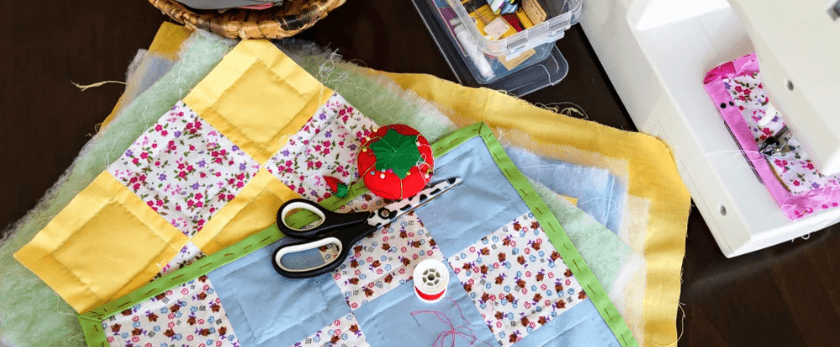Are you tired of constantly buying disposable placemats for your home or events? Do you want to reduce your carbon footprint and contribute to a more sustainable future? Look no further, because making your own homemade placemats is the perfect solution!
Placemats are a common household item that often goes unnoticed in terms of its impact on the environment. However, the truth is that disposable placemats contribute to the growing problem of waste and pollution. According to the Environmental Protection Agency, paper and plastic products make up a significant portion of municipal solid waste, with paper products alone accounting for 26% of total waste in the United States. By making your own placemats, you can reduce your contribution to this waste and help protect the planet.
So why is making your own placemats better for the environment? Let's explore the reasons and learn how to make your own homemade placemats.
Why Disposable Placemats are Bad for the Environment
-
Non-Biodegradable Materials: Most disposable placemats are made from non-biodegradable materials such as plastic or coated paper. These materials take hundreds of years to decompose, and in the process, release harmful chemicals into the environment.
-
Single-Use: Disposable placemats are designed for single-use, meaning they are thrown away after just one meal. This creates a constant cycle of waste and contributes to the growing problem of overflowing landfills.
-
Resource Depletion: The production of disposable placemats requires the use of natural resources such as trees, water, and energy. This not only depletes these resources but also contributes to air and water pollution.
-
Harmful to Wildlife: Improperly disposed of disposable placemats can end up in our oceans and waterways, posing a threat to marine life. Animals can mistake them for food, leading to ingestion and entanglement, which can be fatal.
Why Making Your Own Placemats is Better for the Environment
-
Sustainable Materials: By making your own placemats, you have control over the materials used. You can opt for sustainable and biodegradable materials such as cotton, linen, or bamboo, which have a lower impact on the environment.
-
Reusable: Homemade placemats can be used multiple times, reducing the need for constant replacements. This not only saves money but also reduces the amount of waste produced.
-
Customizable: Making your own placemats allows you to get creative and customize them to your liking. You can choose the fabric, design, and size, making them unique and personal.
-
Educational: Making your own placemats can be a fun and educational activity for children and adults alike. It teaches the importance of reducing waste and encourages creativity and resourcefulness.

What You'll Need to Make Homemade Placemats
- Fabric of your choice (cotton, linen, bamboo, etc.)
- Scissors
- Sewing machine or needle and thread
- Measuring tape
- Iron
- Fabric pencil or chalk
- Optional: fabric glue, embellishments (buttons, ribbons, etc.)
Directions for Making Homemade Placemats
-
Measure and cut your fabric to the desired size of your placemat. A standard placemat size is 12x18 inches, but you can adjust it to your preference.
-
Fold over the edges of the fabric by 1/4 inch and iron them to create a clean edge.
-
Fold over the edges again by 1/4 inch and iron them once more.
-
Sew along the edges of the fabric to secure the folded edges. You can use a straight stitch or a decorative stitch for added flair.
-
Optional: If you want to add embellishments, such as buttons or ribbons, now is the time to do so. Use fabric glue or sew them onto the placemat.
-
Let the placemat dry and then iron it once more to ensure all edges are secure.
-
Repeat the process for as many placemats as you need.
-
Once you're done using the placemats, simply wash them and reuse them for your next meal.
Tips for Making Homemade Placemats
- Get creative with your fabric choices. You can use old clothes, bedsheets, or even repurpose old curtains or tablecloths.
- Consider using fabric scraps or remnants to reduce waste even further.
- If you don't have a sewing machine, you can hand-sew the placemats using a simple running stitch.
- Make a set of placemats for different occasions or seasons to add variety to your table setting.
- Encourage your friends and family to make their own placemats and host a placemat-making party.
Responsible Disposal of Old Placemats
If you have old disposable placemats lying around, it's essential to dispose of them responsibly. Here are some tips for proper disposal:
- If the placemats are made of paper, recycle them in your local recycling program.
- If the placemats are made of plastic, check if they are recyclable in your area. If not, consider repurposing them for crafts or use them as drop cloths for messy projects.
- If the placemats are still in good condition, consider donating them to a local charity or thrift store.
- Avoid throwing placemats in the trash, as they will end up in a landfill and take hundreds of years to decompose.
Conclusion
Making your own homemade placemats is a simple and effective way to reduce your impact on the environment. By using sustainable materials and reusing them, you can help reduce waste and contribute to a more sustainable future. So why not give it a try and make your next meal a little greener with homemade placemats? Your wallet and the planet will thank you.










